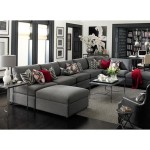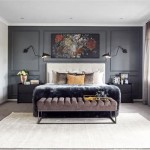Pink Room Decorating Ideas: A Comprehensive Guide
Pink, often associated with femininity, romance, and tranquility, is a versatile color that can be incorporated into various room designs. Its appeal lies in its wide spectrum, ranging from soft pastels to bold magentas, allowing for a spectrum of aesthetic possibilities. Selecting the right shade and knowing how to complement it with other colors, textures, and design elements are crucial for creating a pink room that reflects personal style and desired atmosphere.
The successful application of pink in interior design necessitates careful consideration of the room's function, natural light, and existing architectural features. A bedroom, for example, might benefit from softer, more calming shades, while a living room could accommodate bolder hues and more dynamic accents. The aim is to create a space that is both visually appealing and functionally comfortable.
Choosing the Right Shade of Pink
Pink encompasses a diverse range of shades, each possessing distinct characteristics and impacting the overall ambiance of a room. Understanding the nuances of these shades is essential for making informed design choices.
Pale Pinks (Blush, Rose Quartz): These soft, muted pinks evoke feelings of serenity and calmness. They are ideal for bedrooms, nurseries, or any space where a relaxed atmosphere is desired. Pale pinks can also serve as neutral backdrops, providing versatility in pairing with other colors and design elements. The lightness of these shades maximizes the sense of space, making them suitable for smaller rooms.
Medium Pinks (Bubblegum, Salmon): These shades offer a more playful and energetic vibe. While still maintaining a degree of softness, they introduce a hint of vibrancy. They are well-suited for living rooms, dining rooms, or even kitchens, adding a touch of personality and warmth. When working with medium pinks, it is crucial to balance their intensity with neutral tones or complementary colors to prevent the space from becoming overwhelming.
Bold Pinks (Magenta, Hot Pink): These vibrant and saturated shades make a statement. They exude confidence and can create a dramatic impact. However, they should be used sparingly as accent colors or in smaller doses, as excessive use can be visually overpowering. Bold pinks work well in accent walls, furniture pieces, or decorative accessories, adding pops of color and visual interest without dominating the entire space.
Dusty Pinks (Mauve, Antique Rose): These mature and sophisticated shades possess a subtle, muted quality. They are often associated with vintage or romantic aesthetics, adding a touch of elegance and refinement to a room. Dusty pinks can be used in bedrooms, bathrooms, or even home offices, creating a calming and understated atmosphere. Their versatility allows them to pair well with both neutral and bolder colors, making them a versatile choice for various design styles.
When selecting a shade of pink, considering the room's natural light is paramount. Natural light can significantly alter the appearance of a color. Colors may appear darker or warmer in rooms with limited natural light, while they may appear lighter or cooler in rooms with ample sunlight. Testing paint samples in the actual room, under different lighting conditions, is crucial for ensuring the chosen shade achieves the desired effect.
Complementary Colors and Texture Considerations
Pink, while visually appealing on its own, truly shines when paired with carefully selected complementary colors. The right color palette can elevate the overall aesthetic and create a balanced and harmonious space. Furthermore, incorporating various textures can add depth and visual interest, preventing the room from feeling flat or monotonous.
Neutral Colors (White, Gray, Beige): These colors provide a grounding effect, allowing the pink to take center stage without being overwhelming. White offers a crisp and clean contrast, while gray provides a sophisticated and contemporary feel. Beige adds warmth and earthiness, creating a more inviting atmosphere. The choice of neutral depends on the specific shade of pink and the desired overall mood.
Gold and Brass Accents: Metallic accents, particularly gold and brass, complement pink beautifully, adding a touch of luxury and glamour. These metals can be incorporated through lighting fixtures, hardware, mirrors, or decorative accessories. The warm tones of gold and brass enhance the richness of pink, creating a visually stunning effect.
Green Tones (Sage, Emerald): Green and pink create a natural and organic harmony. Sage green offers a calming and earthy contrast to pink, while emerald green adds a touch of drama and sophistication. These colors can be incorporated through plants, textiles, or even painted furniture. The combination of green and pink evokes a sense of freshness and vitality.
Blue and Teal Accents: These cool tones create a refreshing and unexpected contrast to pink. Light blue can evoke a sense of tranquility, while teal adds a touch of boldness and sophistication. These colors can be incorporated through artwork, throw pillows, or accent furniture. The interplay between cool and warm tones adds visual interest and depth to the space.
Beyond color, texture plays a crucial role in enhancing the visual appeal of a pink room. Incorporating a variety of textures can prevent the space from feeling flat and monotonous.
Soft Textures (Velvet, Silk, Faux Fur): These textures add a sense of luxury and comfort. Velvet upholstery, silk curtains, or faux fur throws can enhance the tactile experience of the room, creating a more inviting and cozy atmosphere.
Natural Textures (Wood, Rattan, Linen): These textures bring a sense of earthiness and authenticity to the space. Wooden furniture, rattan baskets, or linen curtains can add warmth and character, creating a more relaxed and organic feel.
Contrasting Textures (Leather, Metal, Glass): These textures add visual interest and prevent the room from feeling overly feminine. Leather furniture, metal accents, or glass vases can provide a balance to the softness of pink, creating a more dynamic and sophisticated aesthetic.
Incorporating Pink Through Different Design Elements
Pink can be incorporated into a room through various design elements, allowing for flexibility and personalization. From wall paint to furniture and accessories, the possibilities are vast.
Wall Paint: Painting the walls pink is a classic way to immerse a room in the color. The choice of shade will significantly impact the overall atmosphere, as discussed earlier. When painting walls pink, consider the size of the room and the amount of natural light available. In smaller rooms, lighter shades are generally preferred to maximize the sense of space. Alternatively, an accent wall in a bolder shade can create a focal point without overwhelming the room.
Furniture: Pink furniture pieces can add a touch of personality and charm to a room. A pink sofa, armchair, or bed frame can serve as a statement piece, drawing attention and adding visual interest. Whether opting for a velvet armchair in a dusty rose shade or a lacquered pink coffee table, the choice of furniture can significantly impact the overall aesthetic.
Textiles: Textiles, such as curtains, rugs, and throw pillows, offer a versatile way to incorporate pink into a room. Pink curtains can soften the light and add a touch of elegance, while a pink rug can ground the space and provide warmth. Throw pillows in various shades of pink and complementary colors can add pops of color and visual interest to a sofa or bed.
Accessories: Decorative accessories provide an opportunity to introduce subtle touches of pink without committing to larger design elements. Pink vases, artwork, lamps, or even picture frames can add personality and charm to a room. These accessories can be easily swapped out, allowing for flexibility in updating the room's aesthetic over time.
Lighting: Lighting plays a crucial role in enhancing the color of pink in a room. Warm lighting can accentuate the warmth and richness of pink, while cool lighting can create a more modern and sophisticated feel. Pink lampshades or lighting fixtures can add a subtle touch of color and create a soft, ambient glow.
When incorporating pink through different design elements, maintaining a balance is crucial. Avoid overusing pink, as it can lead to a visually overwhelming space. Instead, focus on creating a harmonious and balanced composition, incorporating complementary colors, textures, and design styles. The goal is to create a pink room that is both visually appealing and functionally comfortable, reflecting personal style and desired atmosphere.
:strip_icc()/102636772-5b6004df196d423a8b938b03a4ac5dc4.jpg?strip=all)
39 Pink Room Decor Ideas To Use Throughout Your Home

How To Style A Pink Bedroom For S The Nordroom
:max_bytes(150000):strip_icc()/273274609_4933575196725426_8311355905606053278_n-66b338cc515d49f0befac96ae02b0db8.jpg?strip=all)
22 Fantastic Pink Room Ideas That Really Look Good
:max_bytes(150000):strip_icc()/206255201_530773454960616_5305231013510386054_n-f2518702b4804ceb9ba8908d19e5f4ce.jpg?strip=all)
22 Fantastic Pink Room Ideas That Really Look Good

21 Best Pink Rooms 2025 Gorgeous Room Decor Ideas

Pink Bedrooms Bedroom Decor Design

Stylish Girls Pink Bedrooms Ideas

Pin On Home Decor Ideas

Luxury Pink Bedroom Interior Design For Girls
:max_bytes(150000):strip_icc()/197654069_2440712096060519_6297059856752948346_n-f4109e659cf34dc98f26028b987a235f.jpg?strip=all)
22 Fantastic Pink Room Ideas That Really Look Good
Related Posts







